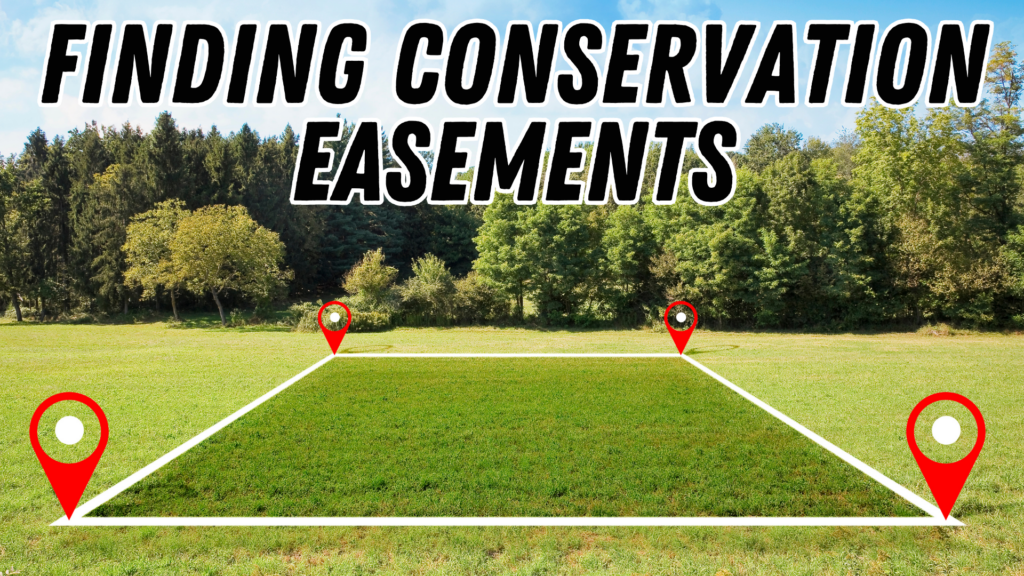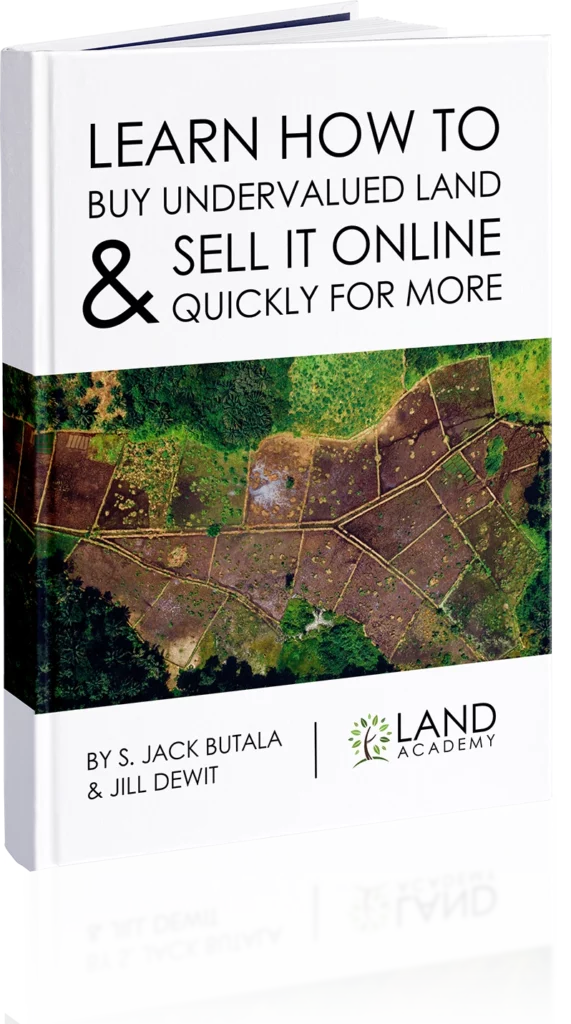Finding Conservation Easements

If you’re like me, doing due diligence is an ever growing list. It usually evolves in a pattern. I become aware of a certain issue that might encumber the land I may buy, then I get worried that everything I’ve bought has been encumbered in that way before I ever knew it was an issue (so I do retroactive research on my inventory, to be sure). Then I try to figure out how to find the answers about that issue. My due diligence list grows once I figure out the tool or data source to find the answers I need.
When I look back, seeing the parcels I’ve bought without any of this research, two things become clear: a) these kinds of problems seem to be somewhat rare, and b) the idea is reinforced that it’s healthy to begin this journey into real estate investing using cheap acquisitions at first, so your mistakes don’t hurt too bad.
One thing I recently became aware of are conservation easements, and how to find them. I used to think of easements conceptually as being pretty synonymous with roads, and since access is a good thing, I figured easements were fine. But then of course there are also easements for gas pipelines or electricity lines, etc, which would limit the use of the property.
A conservation easement is even worse for property value than a power line, which is arguably a good thing. A conservation easement is when a property owner contracts with a local government or other easement holder, in order to reduce the property’s possible uses down to a narrow list — usually open space or agriculture — irrespective of otherwise permitted uses within the area’s zoning. In return, the property owner receives a reduction in tax assessment, and in some cases, a federal income tax benefit. The easement runs with the property, and may be granted with a time limit or in perpetuity. To qualify for federal income tax benefits, it must be perpetual.
During W’s administration, a law was passed that increased the amount of that tax deduction (again, provided the easement is perpetual), but that law has since expired, reducing it down to the prior levels. I imagine this probably caused a spike in perpetual conservation easements circa 2006 through 2012 when it expired, and if you visit the site I reference later in this post, you’ll see a ton of easements in Virginia and Montana, for example. Something to be aware of, for sure.
Since use is restricted, sometimes all the way down to open space, these can affect your resale value significantly, and it’s something to be aware of and revise offers accordingly. Then again, I’ve been contacted by several people wanting to create tortoise sanctuaries in the middle of the desert, so maybe it wouldn’t matter for those buyers, but for someone who’d like to put a small home on it, or if you’re flipping farmland to a developer, this data source will help prevent you from making a big mistake.
So, check out the National Conservation Easement Database at https://www.conservationeasement.us. It’s a non-exhaustive database, with shapefiles and GIS, of conservation easements across the U.S. The easement purpose and easement holder is listed within the shape of each parcel or group of parcels that form any given conservation boundary. Best of all, they have a KML file you can download, which shows boundaries of affected parcels. The GIS map on their website has information when you click on it, but I haven’t been able to get that info inside Google Maps yet. Also, the KML seems to be a flat file, meaning that it will only be up to date on the day you download it. Knowing those issues, go ahead and sign up for a free account and get access to the GIS and KML, and be sure about your offers when dealing with parcels burdened by conservation easements.
Title will probably find these easements, but if you’re doing your own title research and closing yourself, you will probably find this resource pretty great! I find it to be a fast way to do the “on the phone” due diligence that will quickly give you the upper hand if you’re dealing with a seller who is hoping you don’t find it. Enjoy!
Take a moment this weekend to connect with a fellow investor, join a discussion in our community, or dive into a new podcast episode.
If you’re ready to join these members and call yourself a successful investor in the next 60 days, join us now.
Not a member yet and want to get involved?
Request a free one-time special access invite to our closed weekly member call here or click the button below!
Here you can see the deals our current Land Academy members are doing, ask questions, watch deal reviews, connect with members, and more.
You are not alone in your real estate ambition.

